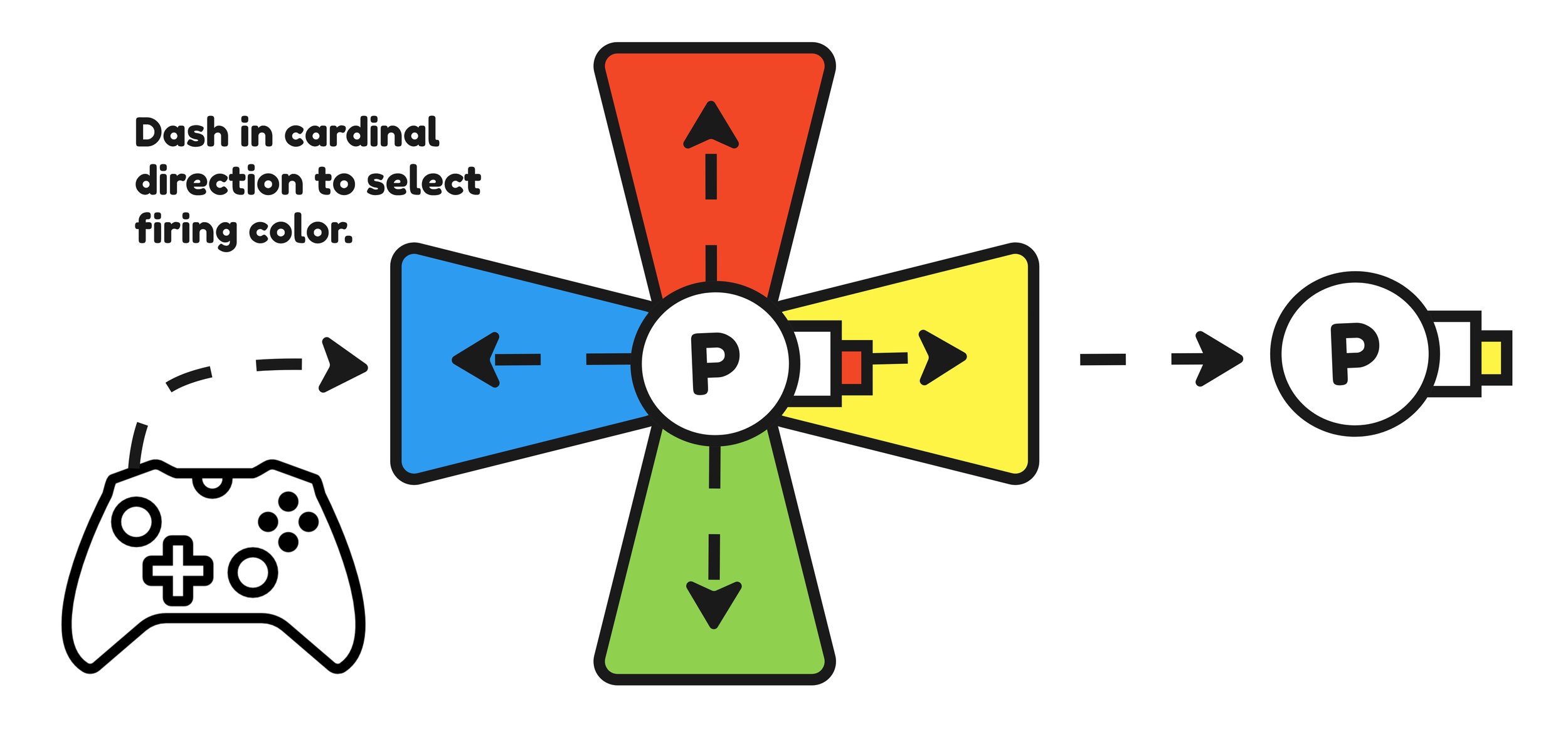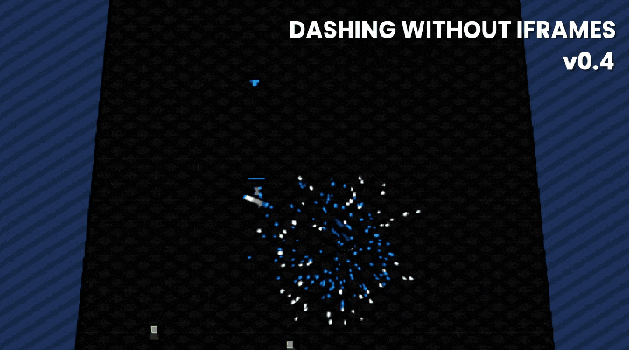
MATCH 3 ROGUE
GAME DESIGNER. TECHNICAL DESIGNER.
Satisfying and energetic ROGUE-LITE TWIN STICK SHOOTER where your weapon spawns enemies. MATCH 3 to destroy them. Combat hoards of enemies to acquire game-changing items and reach a high score.
-
GENRE: Rogue-Like/ Twin-Stick Shooter
TEAM SIZE: SOLO
PROJECT DURATION: 8 Weeks
ENGINE: Unreal Engine 5
-
Designed and implemented core gameplay loop, involving twin-stick combat and match 3 system
Designed and implemented 15 unique enemy types with design pillars of simplicity and target prioritization
Designed and implemented onboarding and difficulty progression
Designed and implemented reward systems and meta-progression, including 16 unique upgrades and item synergies.
Designed and implemented UI/UX
Informed design decisions via process of playtesting and iteration
DESIGNING CORE GAME LOOP
As the singular designer on the project, it was my responsibility to generate the initial game concept, design an engaging core loop, and produce a solid foundation from which the game might prosper.
This process began with a heavy focus on research and ideation. With Twin-Stick Shooter being the prescribed genre, I explored a variety of existing games within that genre, observing features and design patterns that might influence my own work. Once preliminary research had been performed, sketching was used to explore ideas, concluding with a USP: what if a twin-stick shooter was a Match 3 game?
This guided the exploration going forward, taking this core conceit, breaking it into potential gameplay elements, and then taking a solution-oriented approach to “find the fun” within this pre-production phase.
RESEARCH
SKETCHING/ IDEATION
PROOF-OF-CONCEPT PROTOTYPE
Prototypes were rapidly produced within Unreal Engine 5, creating the opportunity to observe these concepts in action. This resulted in the initial core gameplay loop of avoiding enemies, selecting one’s firing color, and producing matches of 3 or more enemies using said firing color.
In traditional Twin-Stick Shooter fashion, players are challenged with both weaving between and attacking enemies simultaneously.
DESIGN BREAKDOWN
Having “followed the fun,” taking a bottom-up approach to designing the game so far, I aimed to breakdown and document the game’s elements and the gameplay said elements created.
I also defined the game’s target player experience, based on what was present in the proof-of-concept prototype, the experiences I found effective within my twin-stick shooter research, and those found in the game’s core inspirations, i.e. Candy Crush. This resulted in the following player experience: Satisfaction, Mastery/ Strategy, Easy to Learn.
Satisfaction: Player verbs, like matching enemies, should feel satisfying to perform. Interacting with the game, objective aside, should feel nice.
Mastery/ Strategy: Achieving the player’s goal should take skill and effort, pushing players to play again and again, getting better each time.
Easy to Learn: Core gameplay should feel intuitive. Even if getting good takes effort, knowing where one can begin improving is key.
This creates targets to reach and inform decisions around when iterating on the game going forward.
PLAYER TOOLKIT
The game’s core conceit involves merging twin-stick shooting with match 3 mechanics. To accomplish this, the player possesses 3 key verbs: dash, shoot, and match.
DASH
HOW
Implemented via Blueprints in Unreal Engine 5. Unreal Engine 5’s enhanced inputs are used to detect when the dash input is pressed and released. When the input is pressed, the game’s time dilation is reduced, creating a slow-motion-like effect. A timeline is used to scale the color wheel, bringing it into view for the player. Movement inputs are saved as an x and y value, and the arc tangent of both numbers are used to get the dash aim direction. When the dash input is then released, an impulse is applied to the player character in the aimed direction, the player’s color is set based on that aimed direction, and the player’s collision object type is changed for a set duration to allow for iframes.
DASH to avoid danger and select color.
DASH iterations involving IFRAMES
HOLD DASH to SLOW TIME
WHAT
The dash input is held to open a color wheel, slowing down time. The movement input is then used to select a direction, and its respective color. When the dash input is released, the player is accelerated in the selected direction and is set to the select color.
When dashing, the player character receives invincibility frames, allowing them to pass through enemies.
WHY
Interlocking Dash & Color Selection: Targeting an Easy to Learn experience, allowing players to select one of four options without necessitating additional button inputs was appealing. Combining the dash with color selection also inspired interesting gameplay. Choosing where to dash or what color to pick are decisions of their own, but forcing an overlap added a layer of depth that appealed to a Masterful and Strategic player experience.
Iframes when Dashing: This was not the case early in development, as it appeared contrary to the Mastery/ Strategy the interlocking of dashing and color selection inspired, since it reduced the risk of dashing.
However, as enemy count increased and obstacles were introduced to levels, the lack of iframes made dashing feel overly punishing to playtesters when healing was limited. On the contrary, when healing was plentiful, dashing through enemies was used as an aggressive tool, which undermined its position as a strategic and re-positioning tool.
As such, the process of avoiding hoards and level ingredients replaced the avoidance of individual enemies in the dashing decision making process, allowing for the introduction of iframes.
Held Input & Slowing Time: Aligning with the intended player experience of Mastery/ Strategy and being Easy to Learn, slowing time gives players the opportunity to familiarize themselves with the color wheel, and gives time to make informed strategic decisions when dashing and selecting their color.
WHAT
…
HOW
…
WHY
…
SHOOT







